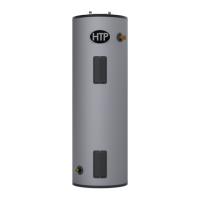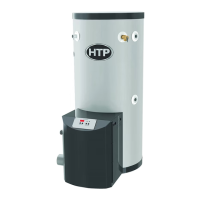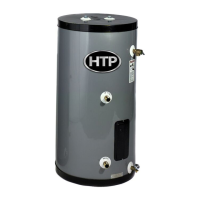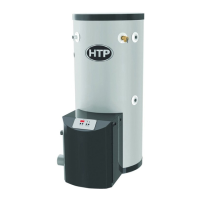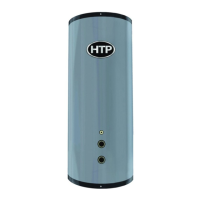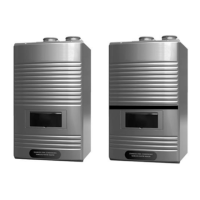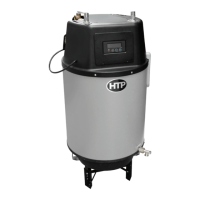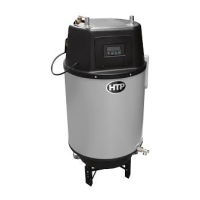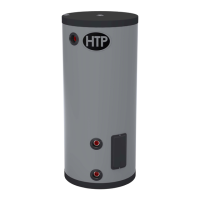LP-551 Rev. 3.9.16
4
J. Applications 19
Part 5 - Venting and Condensate Removal 21
A. General 21
B. Approved Materials for Exhaust Vent and Intake Pipe 22
C. Additional Requirements for Installation in Canada 22
D. Exhaust Vent and Intake Pipe Location 23
E. Exhaust Vent and Intake Pipe Sizing 24
F. Longer Vent Runs 24
G. Exhaust Vent and Intake Pipe Installation 24
H. Applications 25
1. Direct Vent Installation of Exhaust and Intake 25
2. Venting Through an Existing System 27
3. Indoor Combustion Air in Conned or Unconned Space28
I. Condensate Removal System 29
Part 6 - Wiring 30
A. Installation Must Comply With 30
B. Field Wiring Terminations 30
C. Field Wiring 30
D. Line Voltage Wiring for Standard Boiler 31
E. Alarm Connections 31
F. Low Voltage Connections for Standard Boiler 31
G. Tank Sensor or Mechanical Control 31
H. System / Pipe Sensor 31
I. Optional 0-10 Volt Building Control Signal 32
J. Optional UL353 Low Water Cut-O Interface Kit 32
K. Wiring of Cascade System Communication Bus 32
L. Cascade Master Pump and Sensor Wiring 32
M. Cascade Follower Pump and Sensor Wiring 32
Part 7 - Gas Connections 35
A. Gas Piping 35
B. Check Inlet Gas Pressure 36
C. Boiler Gas Valve 37
Part 8 - Start-Up Preparation 38
A. Check / Control Water Chemistry 38
B. Check for Gas Leaks 38
C. Condensate Removal 38
D. Final Checks Before Starting Boiler 38
E. Setting Up a Single Boiler 39
F. Setting Up a Cascaded System 39
G. Lockout Condition 39
H. Cascade System Programming 39
Part 9 - Start-Up Procedure 40
A. Control Overview 40
B. Navigation of the Display 40
C. Operating Instructions 41
D. Programming Boiler Settings 41
E. Programming the System Setting 42
F. System Setting Program Navigation 42
G. Resetting the Maintenance Schedule 44
Part 10 - Start-Up Procedures for the Installer 44
A. Boiler Control Status Menu 44
B. Cascade Menu 47
C. Boiler Test Mode 48
Part 11 - Troubleshooting 48
A. Boiler Error and Fault Codes 48
B. Boiler Error 48
C. Boiler Fault 48
D. User Interface Display 49
Part 12 - Maintenance 54
A. Procedures 54
Table of Contents
Part 1 - General Safety Information 5
A. Improper Combustion 5
B. Gas 5
C. When Servicing the Water Heating System 5
D. Boiler Water 5
E. Freeze Protection 5
F. Water Temperature Adjustment 6
Part 2 - Before You Start 6
A. What’s in the Box 6
B. How the Boiler Operates 6
C. Optional Equipment 7
Part 3 - Prepare the Boiler 7
A. Locating the Boiler 7
B. Flooring 8
C. Leveling 8
D. Clearances for Service Access 9
E. Residential Garage Installation 9
F. Exhaust Vent and Intake Pipe 9
1. Direct Vent of Exhaust and Intake 9
2. Indoor Combustion Air in Conned or Unconned Space 10
G. Prevent Combustion Air Contamination 10
H. Removing a Boiler from a Common Vent System 10
I. Water Chemistry Requirements* 11
Part 4 - Piping 14
A. General Plumbing Information 14
B. Relief Valve 14
C. Backow Preventer 14
D. Potable Expansion Tank 14
E. Circulators 15
F. Flow Switch Installation 15
G. Scalding 16
H. High Velocity Circulator Pump 16
I. Plumbing 18
The CSD-1 ASME Code, Section CW-400 requires that hot
water heating and supply boilers have a) a UL 353 temperature
control device, b) at least one (1) temperature-actuated control
to shut o the fuel supply when system water reaches a preset
operating temperature, c) a high temperature limit control that
prevents the water temperature from exceeding the maximum
allowable temperature by causing a safety shutdown and
lockout, and d) its own sensing element and operating switch.
The temperature control system integrated into the 926
control provided with this heating appliance complies with
the requirements of CSD-1 Section CW-400 as a temperature
operation control. The control monitors the temperature
dierence between the inlet and the outlet sensor, which is
aected by boiler water ow. If this temperature dierence
exceeds 55°F (typically because of low water ow or very low
heat load), the control will reduce the maximum fan speed.
If the temperature dierence exceeds 60°F, the control will
eectively sense there is little or no water ow or heat load and
shut the boiler down. The controller will restart automatically
once the temperature dierence has dropped below 55°F and
the minimum o time (anti-cycle time) has expired. In addition,
if the control senses that the outlet water temperature has
reached 210°F, the boiler is put into a hard lockout and requires
manual reset to restart.
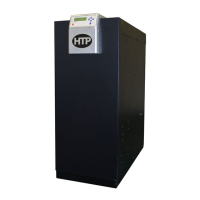
